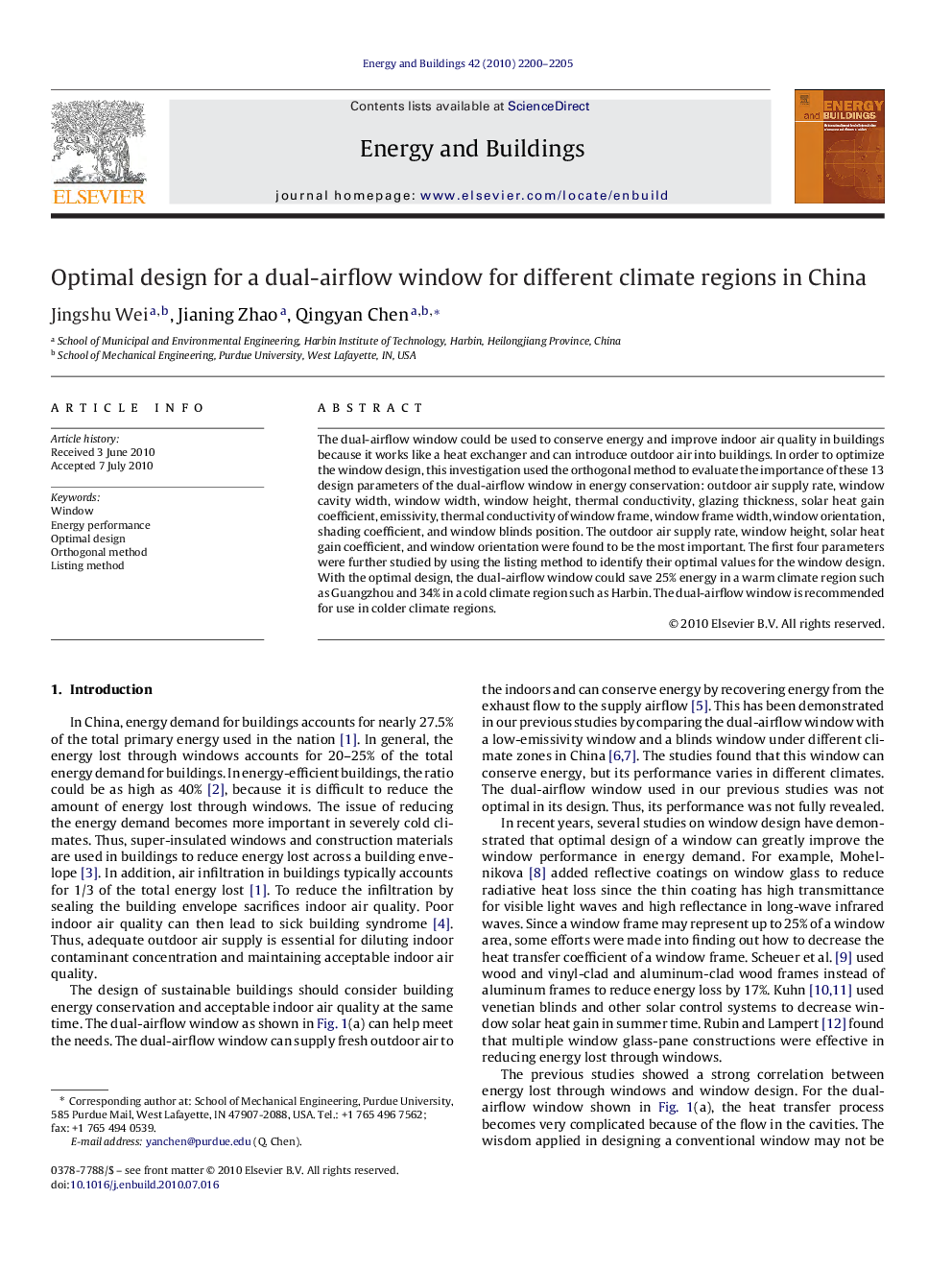| Article ID | Journal | Published Year | Pages | File Type |
|---|---|---|---|---|
| 264183 | Energy and Buildings | 2010 | 6 Pages |
The dual-airflow window could be used to conserve energy and improve indoor air quality in buildings because it works like a heat exchanger and can introduce outdoor air into buildings. In order to optimize the window design, this investigation used the orthogonal method to evaluate the importance of these 13 design parameters of the dual-airflow window in energy conservation: outdoor air supply rate, window cavity width, window width, window height, thermal conductivity, glazing thickness, solar heat gain coefficient, emissivity, thermal conductivity of window frame, window frame width, window orientation, shading coefficient, and window blinds position. The outdoor air supply rate, window height, solar heat gain coefficient, and window orientation were found to be the most important. The first four parameters were further studied by using the listing method to identify their optimal values for the window design. With the optimal design, the dual-airflow window could save 25% energy in a warm climate region such as Guangzhou and 34% in a cold climate region such as Harbin. The dual-airflow window is recommended for use in colder climate regions.
